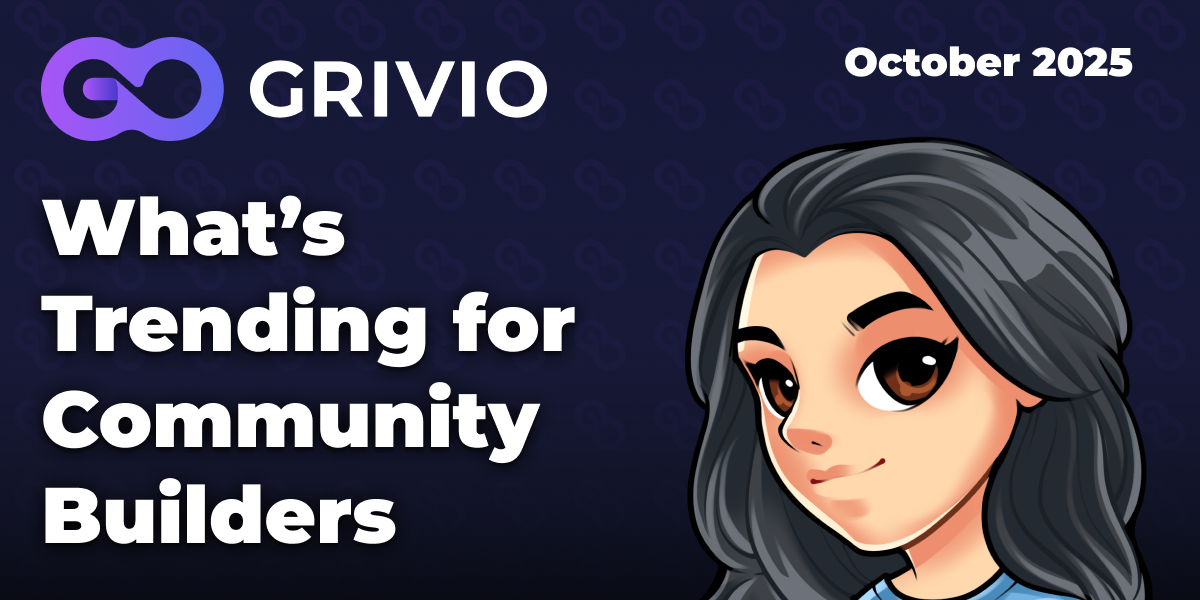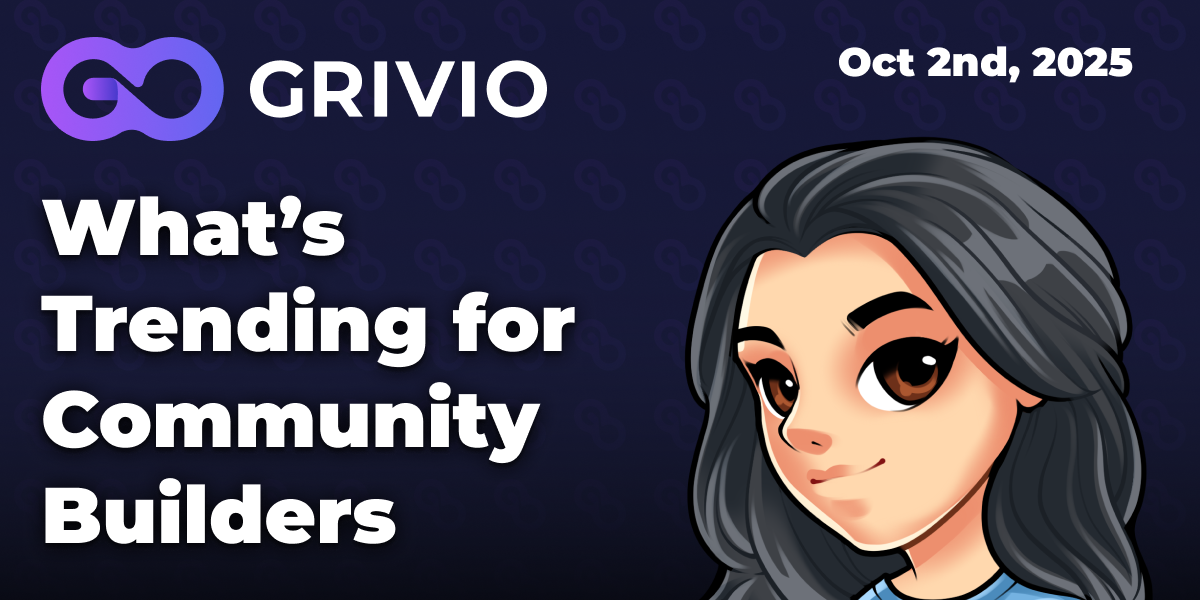Where Did Everyone Go? The Quiet Crisis of Connection
shylor • May 23rd 2025

Grivio connects you with vibrant communities of Grivians who share your unique interests, no matter how niche.

October 22nd 2025

October 3rd 2025

May 21st 2025
shylor • May 23rd 2025

There's a question I keep hearing from community builders, and it's always asked in the same bewildered tone: "Where did everyone go?"
Not online - we know where everyone is online. They're scrolling TikTok in their bedrooms, arguing on Twitter, or watching lives on Twitch. We can see the view counts, the engagement metrics, and the endless stream of content consumption.
I mean in real life. Where did everyone actually go?
My mentor once told me about Friday nights in his small town in the 1980s. Teenagers would pile into cars and drive loops around the main drag, stopping at the one diner that stayed open late, not because the food was good (it wasn't), but because that's where everyone was. You'd run into classmates, make plans, and start conversations that led to relationships, jobs, and lifelong friendships.
That diner is a CBD shop now.
This isn't nostalgia talking. It's economics. When I map out the social infrastructure that used to exist in even small towns, the list is sobering:
Bowling alleys (mostly gone)
Roller rinks (converted to warehouses)
Mall food courts (empty or demolished)
Record stores (there's a metaphor here somewhere)
Arcades (replaced by home gaming)
Community centers (defunded)
Local diners (priced out by chains)
These weren't just businesses. They were third places - those crucial spaces between home and work where community happened organically, where you'd bump into people repeatedly until familiarity bred connection.
Here's what nobody wants to talk about: We've engineered loneliness.
Not maliciously. Not intentionally. But through a thousand optimizations, we've created a world where connection is increasingly impossible.
Start with economics. The same algorithms that determine your Uber fare and your milk price have squeezed every penny of slack out of the system. When a young couple needs three incomes to afford a one-bedroom apartment, when is there time for community? When every dollar is spoken for before it's earned, how do you afford the coffee shop conversation, the bowling night, the casual dinner that builds relationships?
Add the death of third places. It's not profitable to maintain spaces where people... exist. Every square foot must generate revenue. Every moment must be monetized. The result? Nowhere to go that doesn't require spending money you don't have.
Layer on the fear. We've taught a generation (rightfully) about the dangers of smoking, drinking, and drugs. But we've also taught them to fear strangers, to be suspicious of invitations, to document everything for protection. The casual spontaneity that used to create connections now feels dangerous.
Then, everyone should be handed a phone that promises connection without risk, community without discomfort, and relationships without rejection. Why face the anxiety of asking someone out when you can scroll through parasocial relationships with streamers who can't reject you?
I mentor bright, capable, technically skilled young men in their twenties. Most of them haven't been on a date in years. Not because they don't want connection - they're desperate for it. But they literally don't know how.
They've never practiced. The low-stakes interactions that used to teach social skills - ordering at a counter, making small talk at the bus stop, gradually building confidence - have been optimized away. You can live your entire life now without speaking to a stranger.
One of them told me recently, "I know theoretically how to ask someone out. I've seen it in a thousand TikToks, but I've never actually seen it happen in real life."
That's not a personal failure. That's a civilizational one.
Online communities were supposed to solve this: Connect people across distances, find your tribe, and build relationships without geographic limits!
And sometimes they do. I've watched communities change lives, forge real friendships, and create genuine support networks. But more often, they become another layer of consumption - another feed to scroll, another place to lurk without engaging.
The issue isn't the technology. We're asking digital spaces to completely replace physical ones, and they can't. They weren't designed to. A Discord server, no matter how vibrant, can't replace the third place, where bodies exist in space, where presence is felt, and where connection happens in three dimensions.
I don't have solutions. Anyone who claims they do is selling something.
But I know this: acknowledging the problem is the first step. We've been pretending that digital connection is enough, that economic optimization is neutral, that the loss of third places is just progress.
It's not. We're living through a quiet crisis of connection, and the first step is to stop pretending everything is fine.
Maybe the rebuild starts small: a community that meets monthly in person, a Discord server that prioritizes local members and encourages offline gatherings, and a return to valuing inefficiency - those wasted hours at the diner that weren't wasted at all.
Maybe it starts with admitting that we've built a world that makes connection nearly impossible, and deciding that's unacceptable.
Maybe it starts with laying one brick in a new foundation, even if we can't see what we're building yet.
This piece is part of an ongoing series exploring the intersection of digital communities and human connection. At Grivio, we're thinking deeply about these challenges as we build tools for community builders. We don't have all the answers, but we're committed to being part of the conversation.
Do you have thoughts on the crisis of connection? We'd love to hear them. Because if we're going to rebuild the infrastructure of human connection, it's going to take all of us.